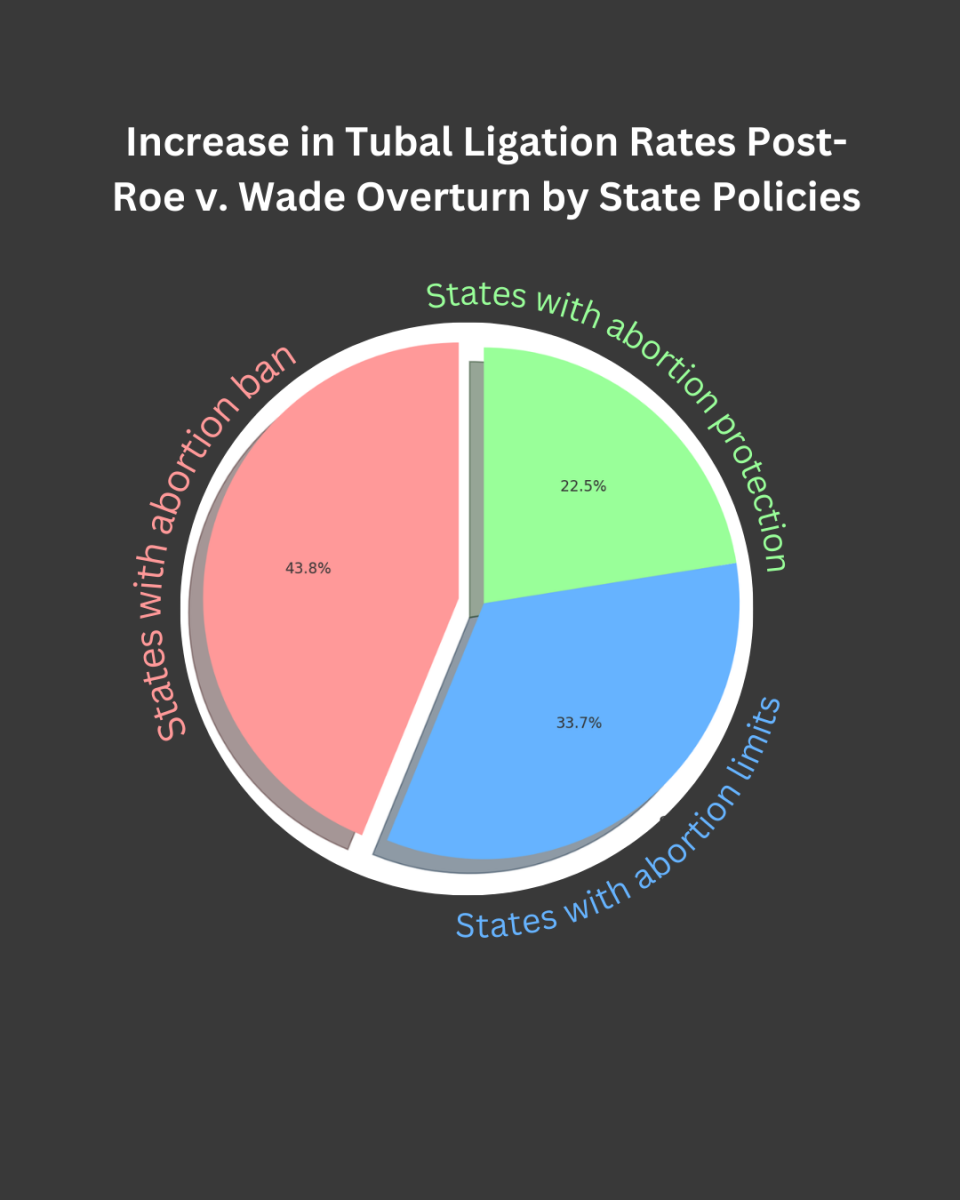It has been over two years since the overturning of Roe v. Wade, and some of the effects of the ruling are presenting themselves. A recent study by the Journal of the American Medical Association, or JAMA, showed that the number of women undergoing tubal ligation has risen 3% each month especially in states that adopted strict abortion bans. Georgia bans abortions after the six week mark and they must wait 24 hours after receiving counseling.
“This procedure is intended to be permanent and not reversible,” said Denise Cochran, a nursing lecturer at GCSU. “Many people call this “tying your tubes” because of a certain surgical method sometimes used in the past. Current recommendations are to remove as much of the fallopian tubes as possible because this was found to decrease a woman’s chance of developing ovarian cancer in her future. Because of this, the possibility of “reversing” a tubal in the future is virtually eliminated when the tubes are completely removed.”
With the permanent nature of this procedure, doctors want patients to consider the risks of bleeding from an incision or inside the abdomen, infection, damage to other organs inside the abdomen, Side effects from anesthesia, Ectopic pregnancy (an egg that becomes fertilized outside the uterus) and incomplete closing of a fallopian tube that results in pregnancy.
“I think that tubal ligation is a very effective form of contraception, but it is a bit extreme and should not be a go-to option,” said Elizabeth Crump, a junior art major. “I don’t think we should take surgical decisions, especially ones that change the balance of our bodies, lightly.”
Other forms of contraception, such as condoms or birth control, are widely available to most women in America. Tubal ligation is seen as a more extreme form of contraception, and some GCSU students see its increased prevalence as a direct result of the lessened availability of abortions due to Roe v. Wade’s overturning.
“I wouldn’t want to say out of fear, but out of fear,” said Brittany Turner, a junior marketing major. “They don’t really have any other ways of contraception, and it’s kinda a fear that like ‘Oh well if I were to accidentally get pregnant with my husband.’ They don’t want to go through the burden of having to abort a child. It’s not like we’re given that option either nowadays. It’s scary. As a woman, it’s scary to know all the burden would fall on me.”
The purpose of the JAMA study was to see if a web-based aid could improve sterilization decision quality among pregnant individuals. This aid is called “MeDecisions/MiDecisions” and provides video and written information on tubal sterilization. It also has a table about the different contraception methods and provides feedback on what they learned.
First, JAMA conducted several rounds of testing women’s knowledge surrounding the procedure and its lasting effects. JAMA then educated another group of women using “MeDecisions/MiDecisions”, and proceeded to test them as well. The women gained more knowledge on the procedure and it helped the women further understand their options when it comes to contraception. Providing a proper education on these types of procedures is imperative to ensure these individuals have all the information they need before making that choice.
“I will say that I am very in favor of people being fully educated on their options for contraception and the true nature of those methods,” Cochran said. “I do not agree with people possibly getting this procedure if they intend to use it as a temporary method.”
Pregnancy also can have complications, such as, anemia, diabetes, preeclampsia and preterm labor. Some women’s choice to go through with this procedure has nothing to do with the political atmosphere and entirely with their own opinions of pregnancy.
“Honestly, the idea of being pregnant scares me at this point in my life, so I can see that [tubal ligation] being in the cards for me at some point after I get married and we figure out the kids situation,” Crump said.
Doctors aim to ensure patient autonomy while guaranteeing they act in the patient’s best interest, considering the permanence of the procedure. As a result, Cochran says they consider several different factors.
“To have a tubal ligation, that includes signing a consent form stating that they understand the permanence and possible lack of ability to reverse the procedure, a 30-day waiting period and a requirement that they be at least 21 years old,” Cochran said. “Included on the consent form is that they are aware of effective and reversible forms of contraception that are available to them.”
There are a variety of reasons people opt for tubal ligation, including being done having children and fear of passing down genetic conditions and possible health conditions that could come with the pregnancy.
“The most important item to consider is if a woman fully understands the nature of the procedure and is having the procedure done by her choice,” Cochran said. “Is she making the decision without coercion or influence by another person, including the healthcare provider?”
Without Roe v. Wade ensuring abortion as an avenue in reproductive healthcare, many women are considering how to move forward managing their sexual wellness. Tubal ligation is on the rise, but women choose to undergo this procedure for a variety of reasons. Healthcare professionals urge women to remain knowledgeable about all explorable options in order to make the best choice for themselves.


